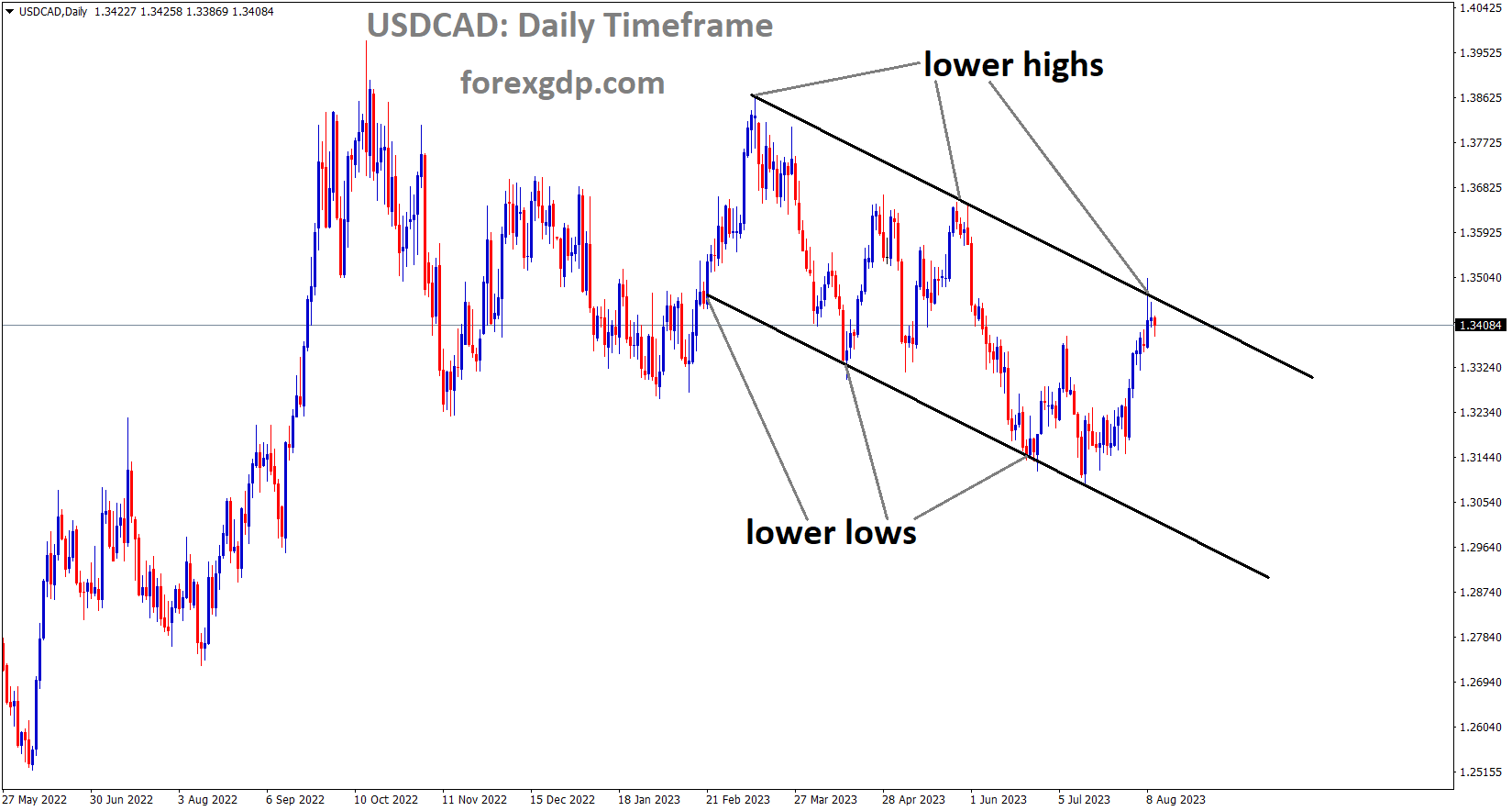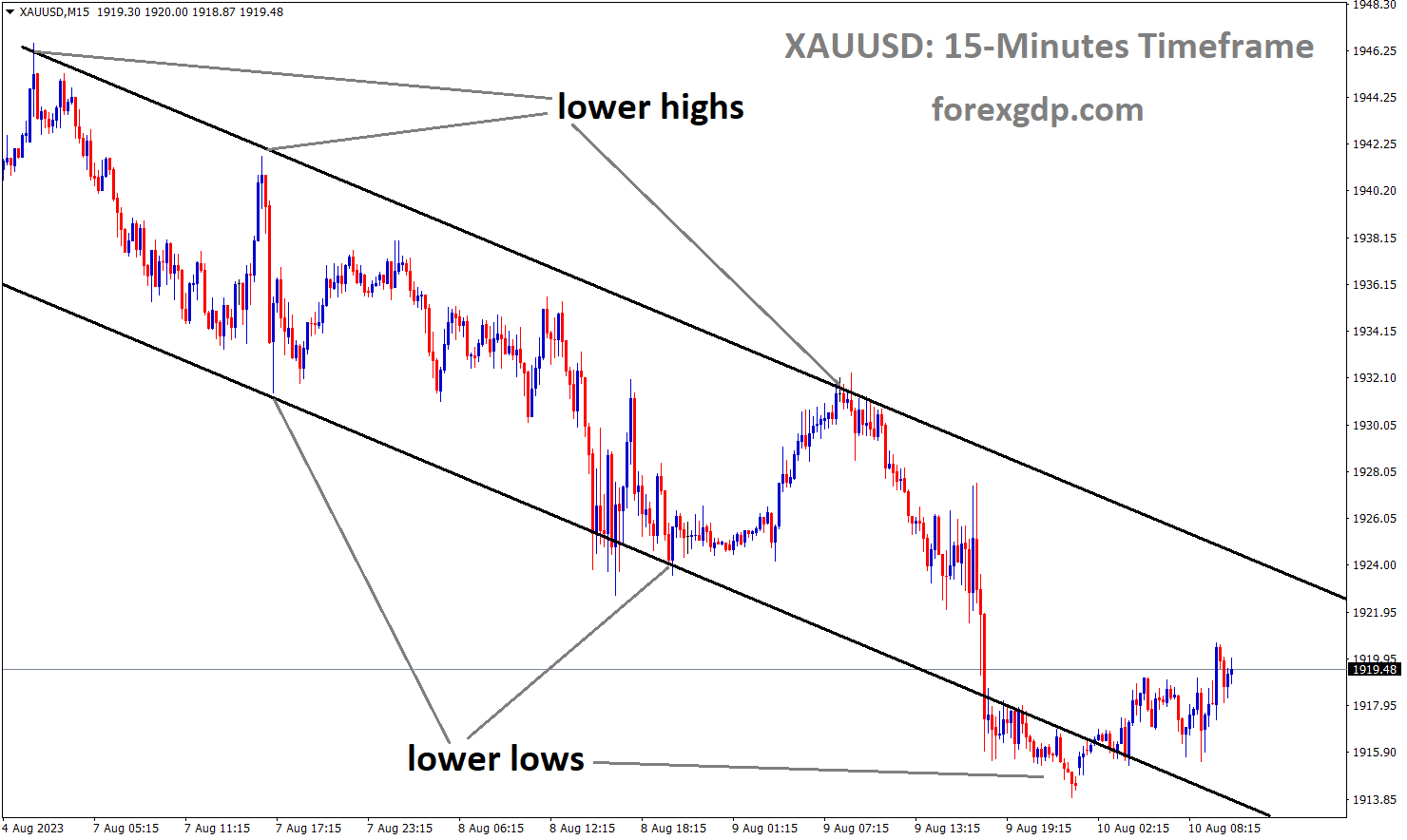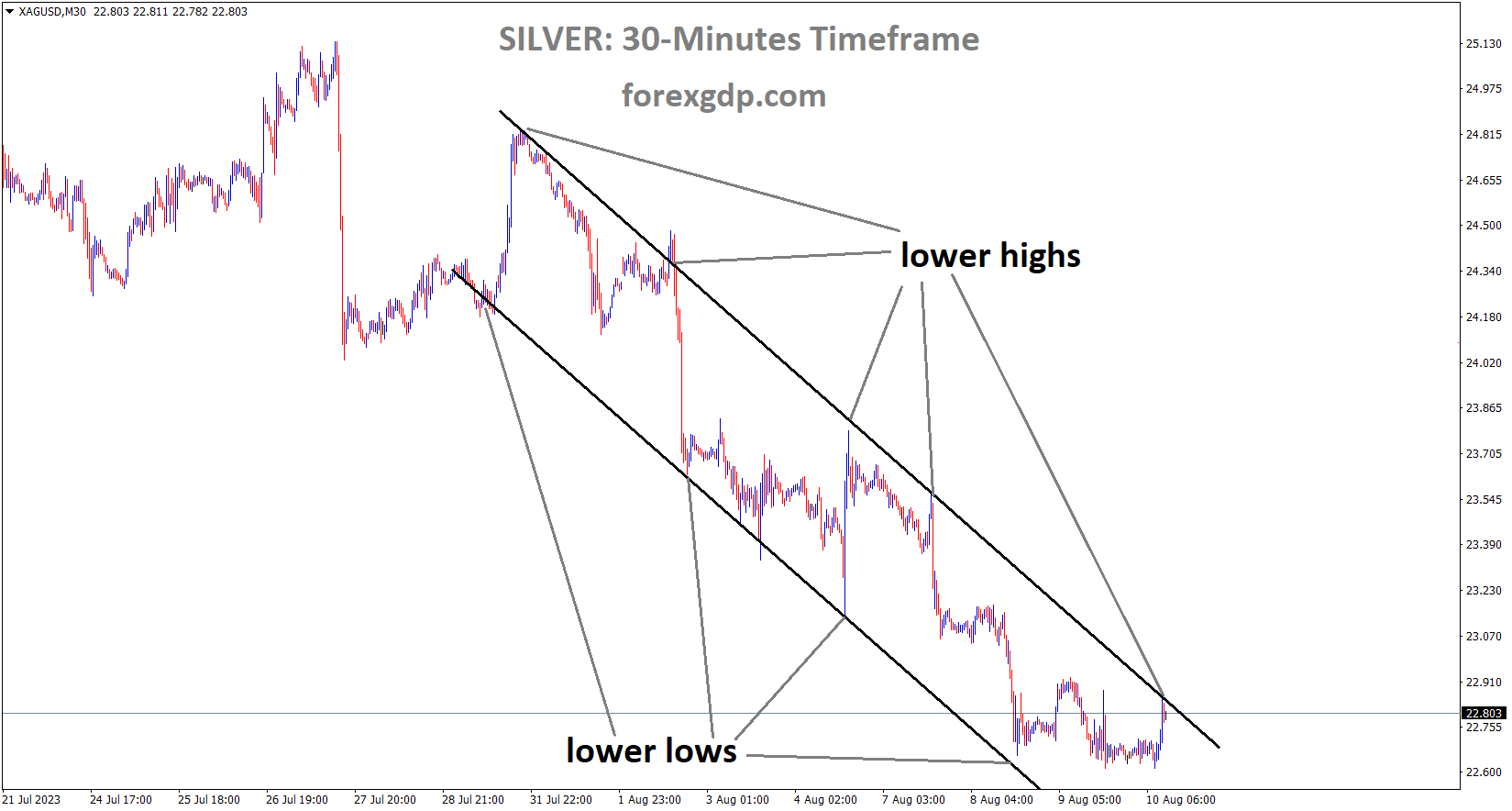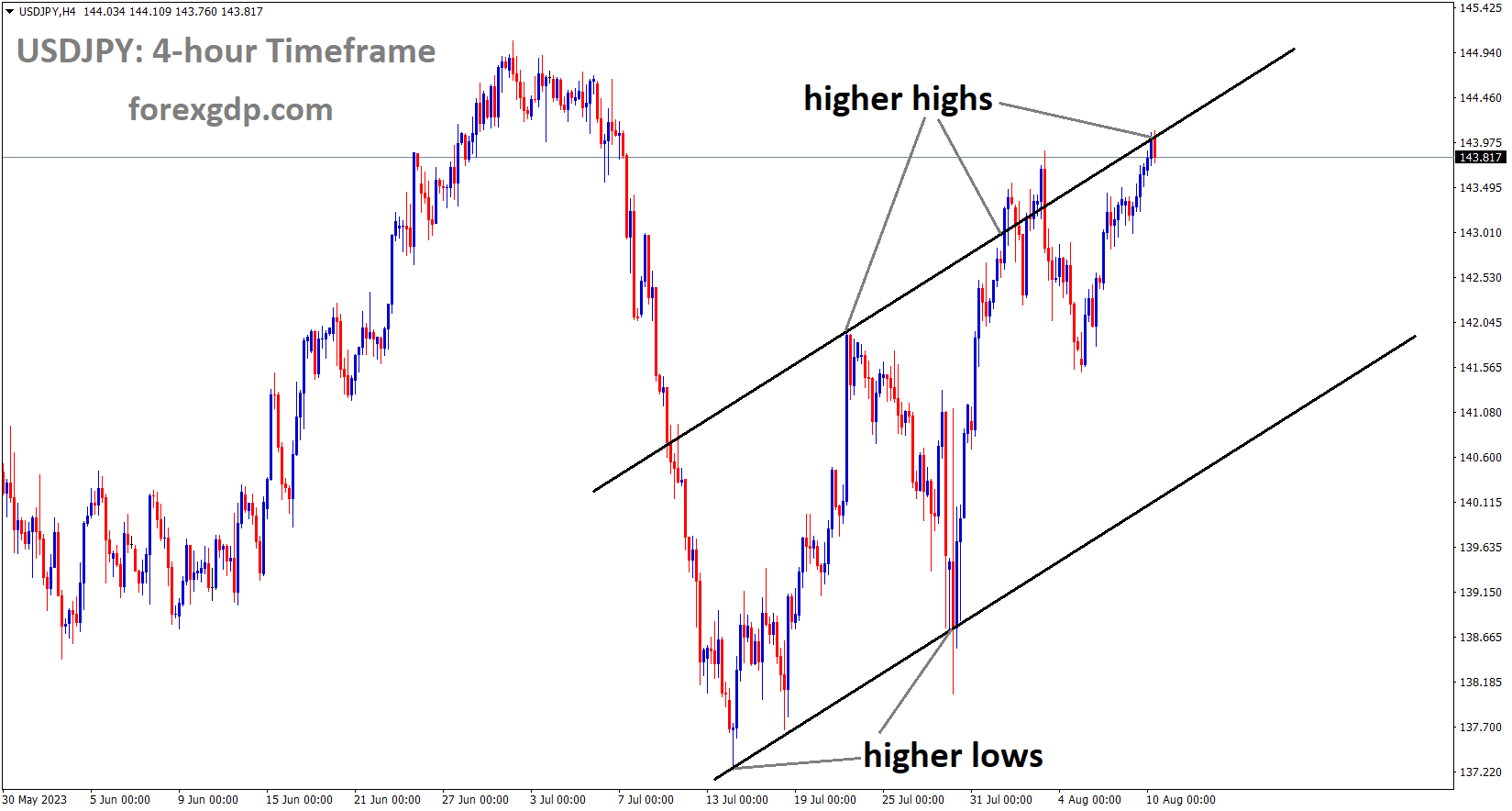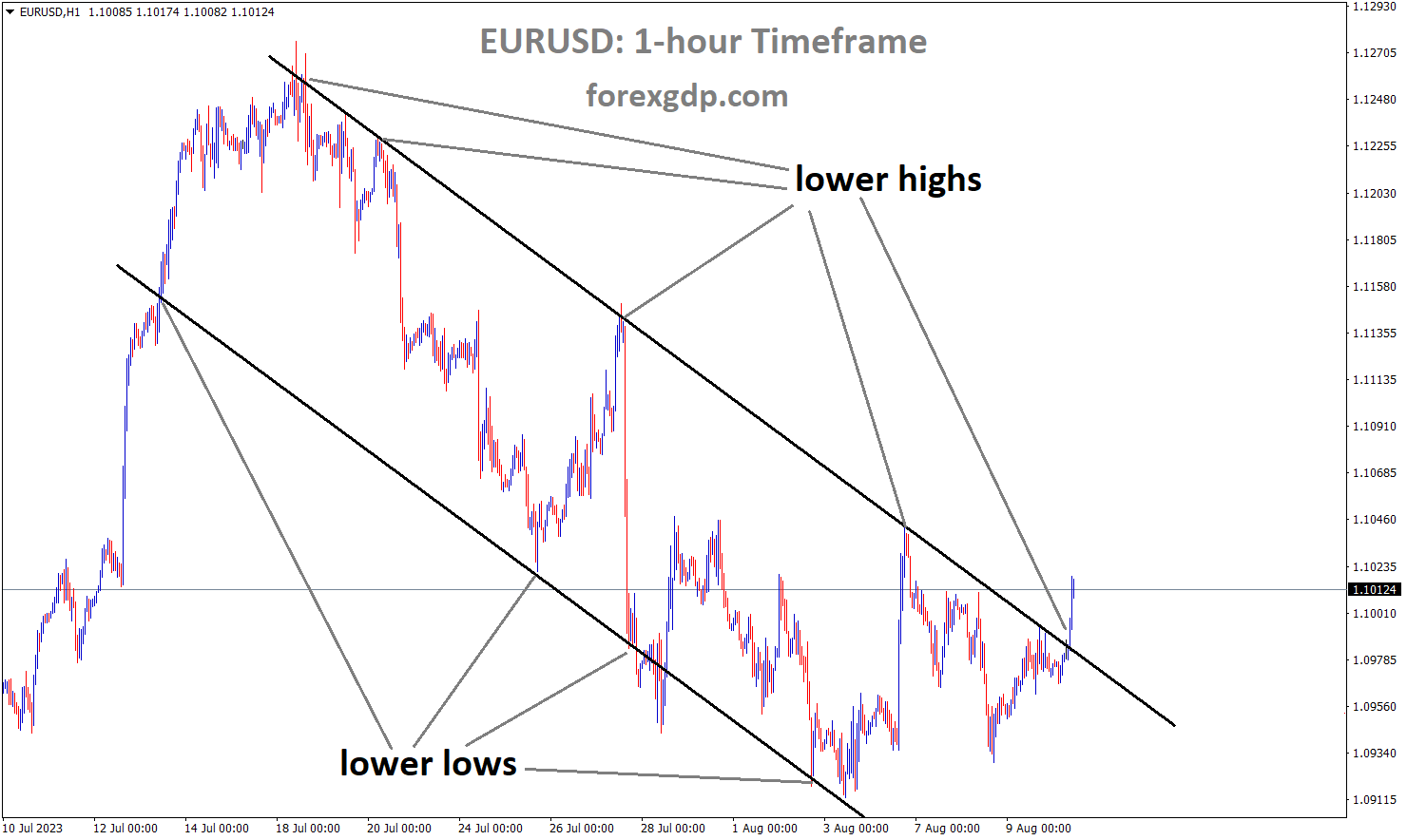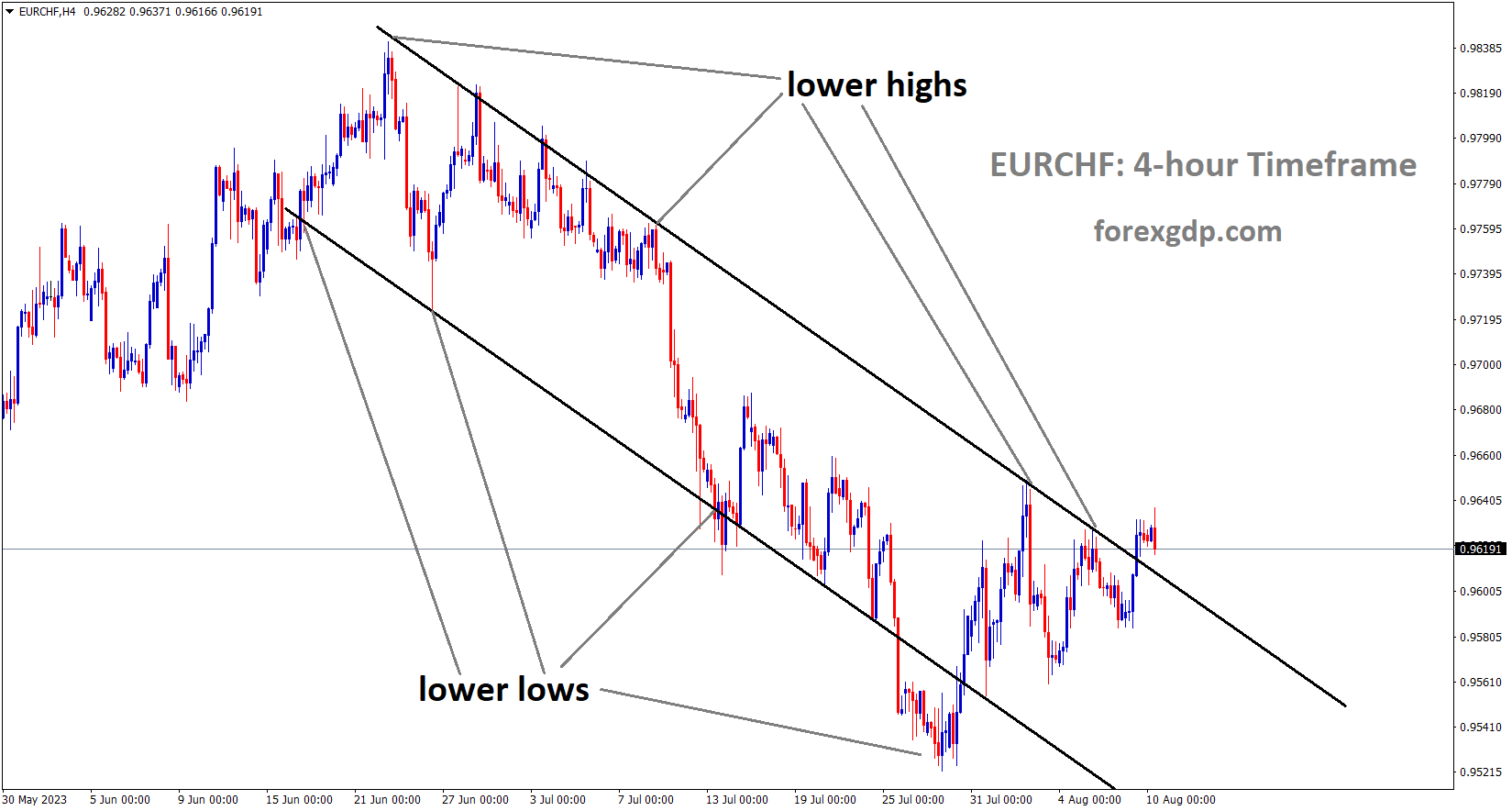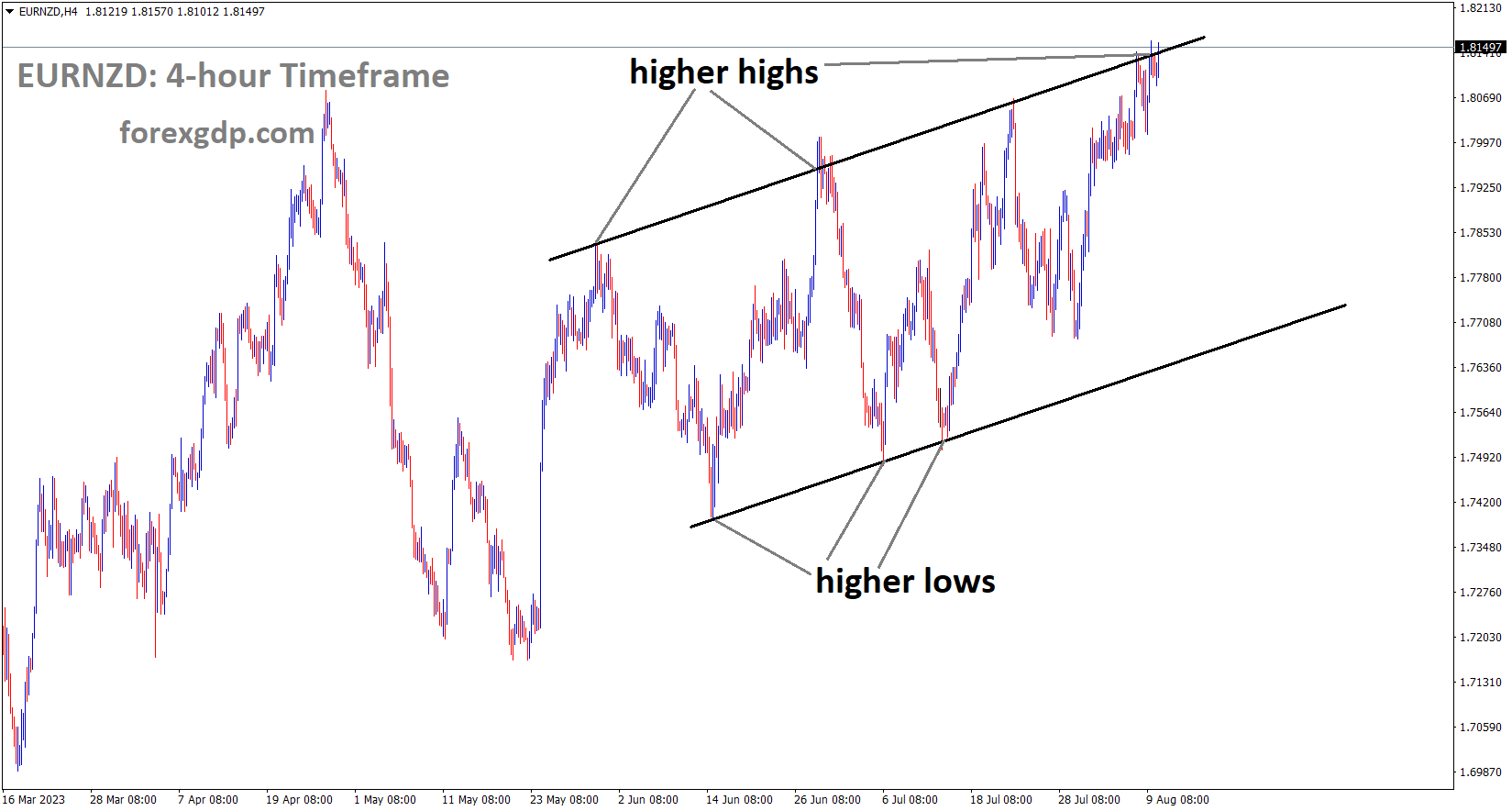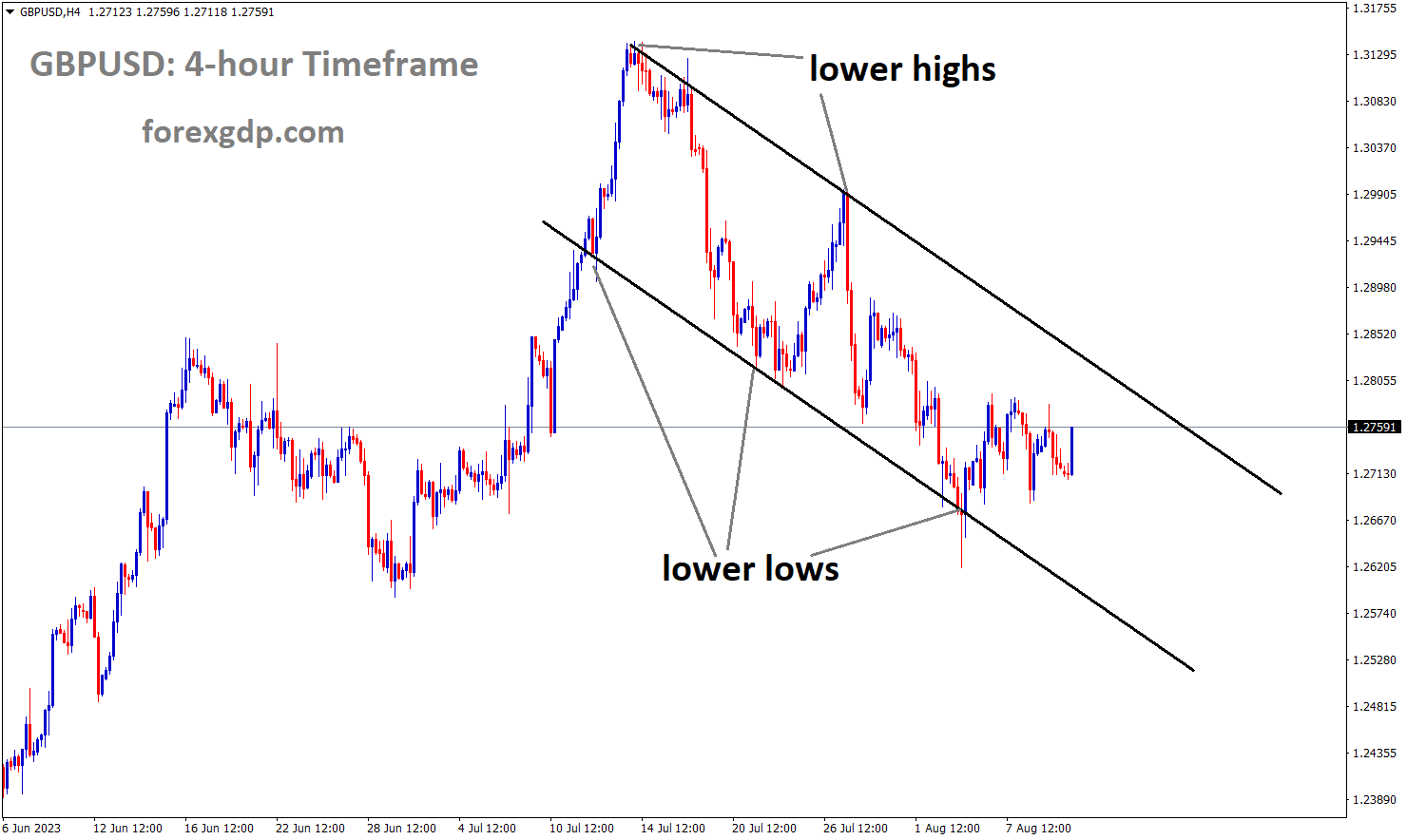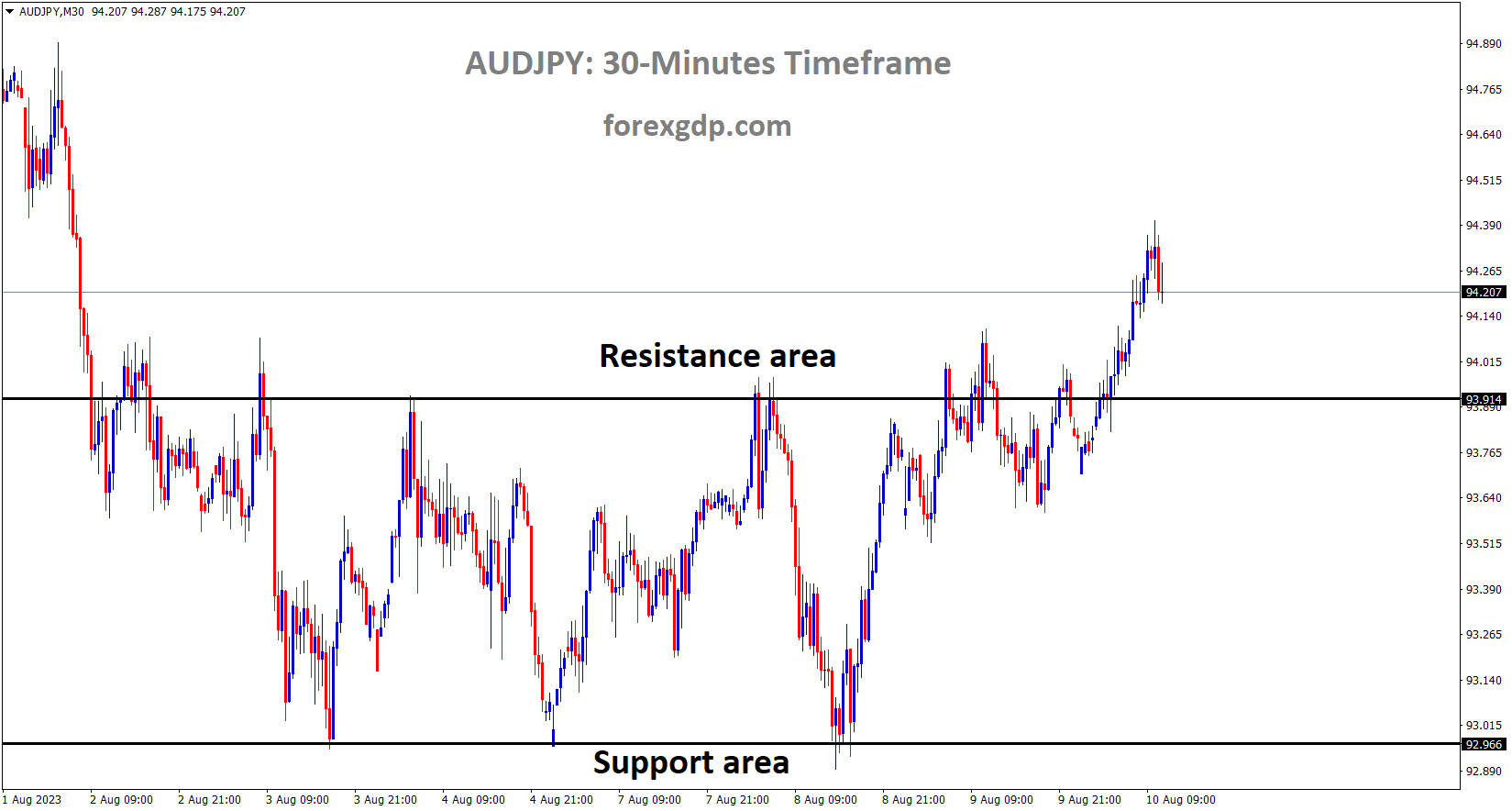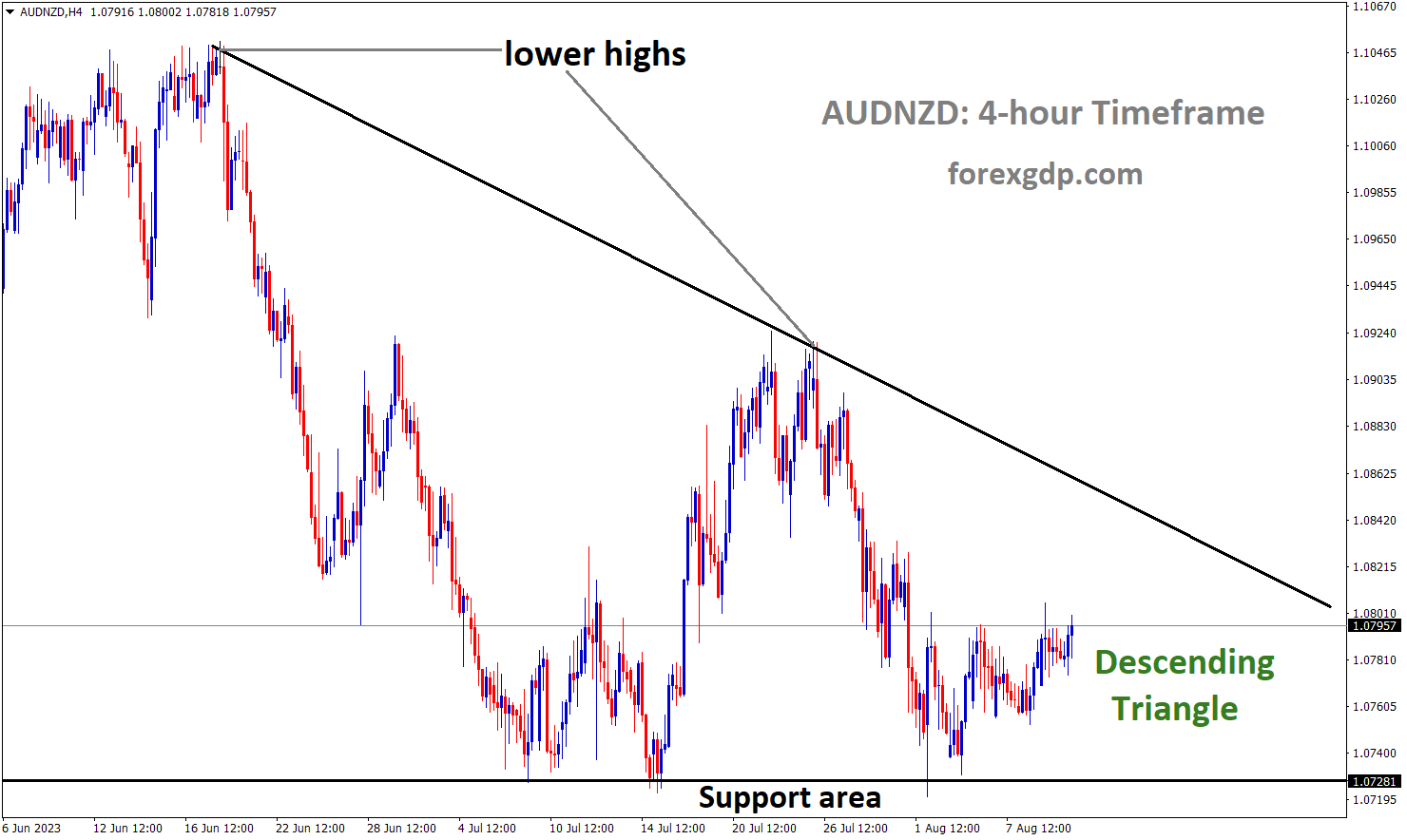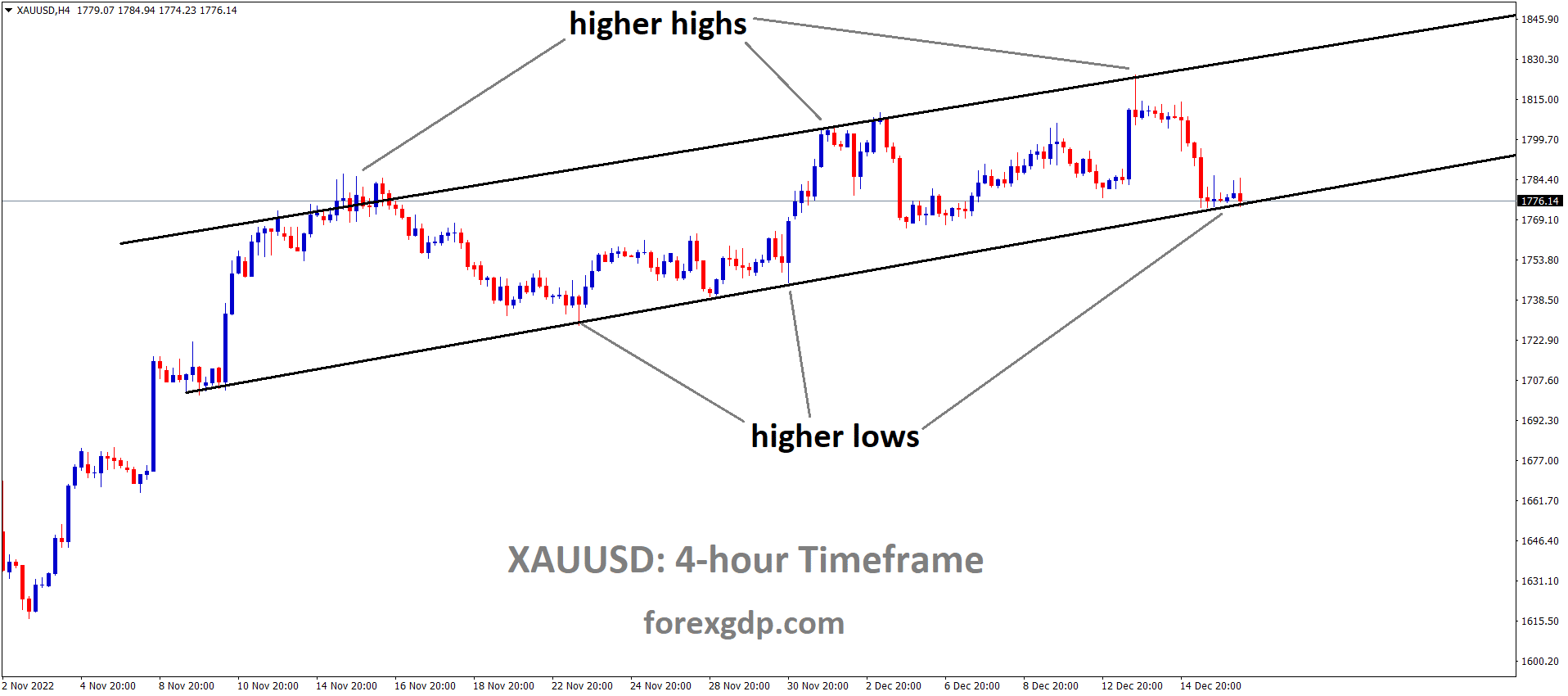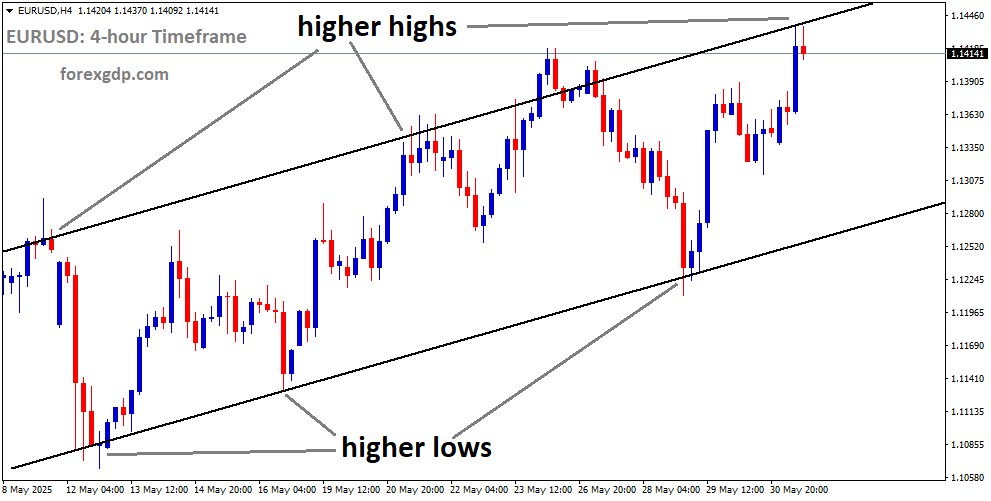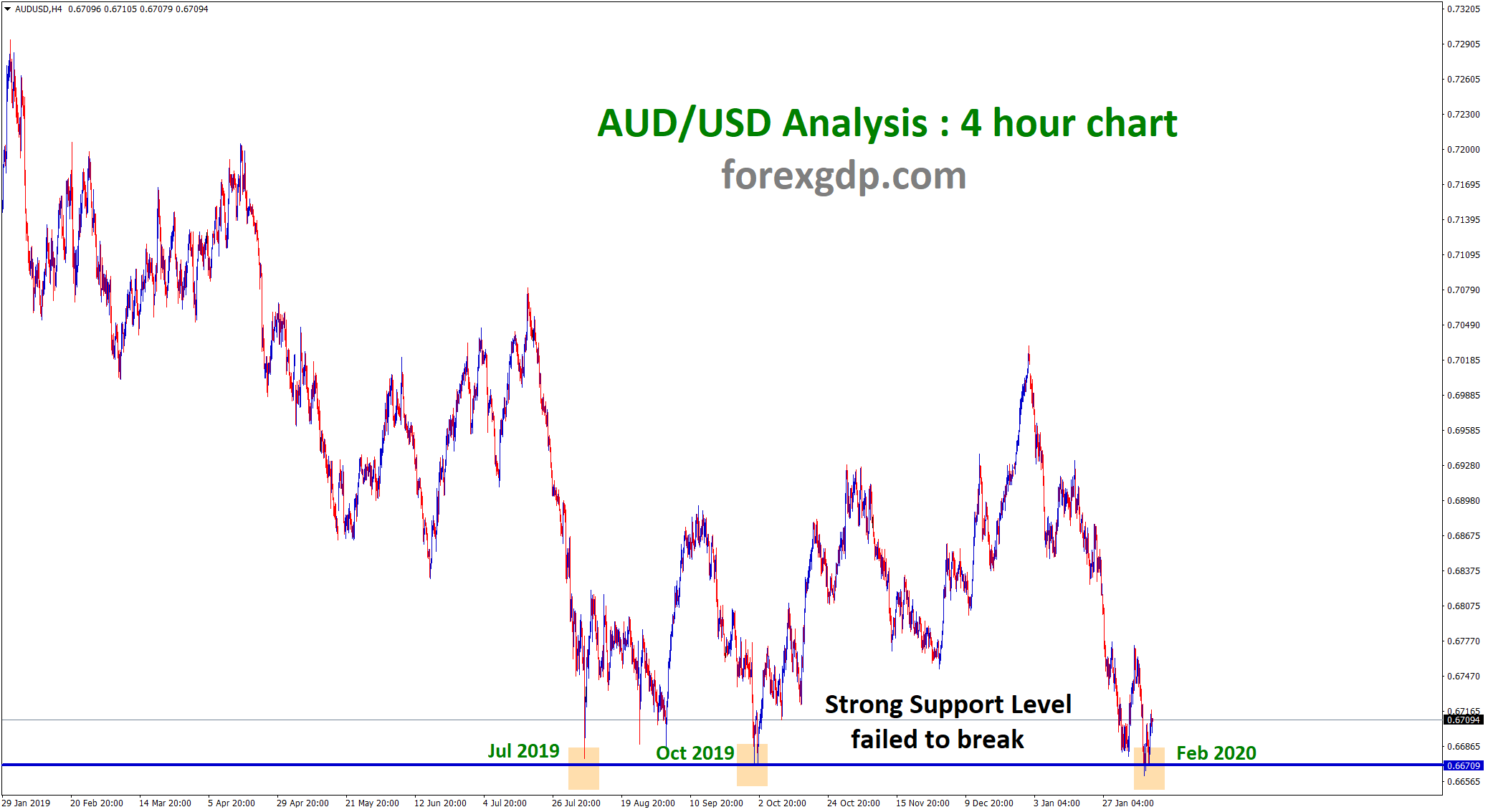USDCAD Analysis
USDCAD is moving in the Descending channel and the market has reached the lower high area of the channel
US sanctions against China, which limit US investments in Chinese companies, caused the US dollar to fall against the Canadian dollar yesterday.
The continued increase in oil prices helps the CAD relative to counter pairs.
The USDCAD shows slight losses at 1.3400, retreating from the day’s peak, which had been reached in 2.5 months. That being said, the recent decline in the Loonie pair may be attributed to cautious optimism in the market, as well as to the US inflationary expectations and the weak oil price. To allay concerns about the major industrial powers in the world, China’s Producer Price Index PPI for July improved in comparison with the negative Consumer Price Index CPI data for the same month. The White House’s announcement that the Biden Administration is providing relief to Chinese technology companies has also increased risk appetite. The report stated that “the US plans to target those Chinese companies that get more than 50% of revenue from the sectors including artificial intelligence AI and quantum computing.” The US Dollar Index DXY reversed from a downward-sloping resistance line from May 31 while printing the first daily loss in three at 102.35, down 0.16% intraday. This was made possible by the absence of significant risk aversion in addition to the negative US Treasury bond yields.
However, WTI crude oil is still trading steadily inside the weekly trading range of $82.00–83.00; as of this writing, it is down 0.05% intraday near $82.40. It is important to note that the impending failure of a significant Chinese real estate company adds to the problems facing US banks and makes the OPEC+ supply cuts more difficult to accept, despite China’s inflation statistics and positive trade news from the White House. In the midst of these plays, S&P500 Futures bounces back from the previous day’s monthly low and prints modest gains at 4,525.
It should be noted that the previous day’s downward revision to the ratings of US banks and financial institutions by global rating agencies was compounded by Italy’s unexpected tax on banks’ windfall profits. Similar concerns might include the UK recession, China’s economic slowdown, and the Dragon Nation’s geopolitical tensions with the US and Japan over Taiwan. As a result, the US Dollar increased and the Wall Street benchmark closed lower, allowing the USDCAD pair to retest a multi-day high prior to the most recent decline. Ahead of the crucial US Consumer Price Index CPI data for July, traders of the USDCAD pair may find amusement in Canada’s June building permits and risk catalysts. This time, the US CPI is even more important given the conflicting employment data and the policymakers’ recent reluctance to justify additional rate increases.
XAUUSD Analysis
XAUUSD Gold price is moving in the Descending channel and the market has rebounded from the lower low area of the channel
Prior to today’s US CPI data, gold prices have dropped. The FED table may see additional rate increases in order to contain inflation within the target range, according to FED Speakers.
A rebound in the US dollar and a decline in market participants’ willingness to take risks are driving down the price of gold XAUUSD. Despite expectations from Federal Reserve Fed policymakers that the central bank’s interest rates have temporarily peaked, the precious metal market is unable to sustain its recovery. Additionally, if inflation keeps declining and job growth is even slower in the coming year, the Fed may decide to lower interest rates. Investors are waiting for the US Consumer Price Index CPI data on Thursday in order to determine September’s monetary policy guidance. Following a period of weakness, investors anticipate a rise in the headline CPI as rising oil prices drive up petrol prices. While US hiring declined in July, the country’s unemployment rate is still very close to all-time lows. The inflation data from July will now serve as a foundation for the subsequent interest rate decision. Notwithstanding the US Dollar continuing to move sideways ahead of US inflation data, the gold price is unable to maintain a recovery move. The Federal Reserve’s neutral interest rate guidance earlier caused the US Dollar Index to feel hot. Patrick Harker, the president of the Philadelphia Fed, stated on Tuesday that the central bank could now maintain current interest rates while letting monetary policy take its course. Note to investors: The Fed Harker does not have the right to vote this year.
XAGUSD Analysis
XAGUSD Silver Price is moving in the Descending channel and the market has reached the lower high area of the channel
New York Fed President John Williams anticipates that the central bank will take rate cuts into consideration in 2019 and believes that interest rates have peaked for the time being. With market sentiment turning positive and the People’s Bank of China PBoC supporting stronger-than-expected exchange rate fixing, the US Dollar Index corrects sharply to near 102.40.Fed Governor Michelle Bowman’s pessimistic remarks that further policy tightening is warranted due to the combination of elevated inflation and a strong labour market are ineffective in maintaining the US dollar’s high levels. Following a slowdown in hiring and steady wage growth, investors’ attention is now focused on the inflation data, which is set to be released on Thursday at 12:30 GMT. The headline and core CPI, which do not include volatile food and oil prices, are expected to have maintained a 0.2% monthly pace in July. After posting 3.0% in June, the annual headline CPI is predicted to increase to 3.3%. Conversely, it is anticipated that core inflation will slightly slow down to 4.7% from a previous estimate of 4.8%. A strong rebound in global oil prices supports a higher consensus for headline CPI. In the event that inflationary pressures pick up, the Fed may be forced to decide whether to keep raising interest rates.
According to Bloomberg, the US government intends to outlaw investments in Chinese artificial intelligence AI firms. The administration intends to target only Chinese businesses that derive more than half of their revenue from artificial intelligence and quantum computing. The National Federation of Independent Business NFIB reported that as worries about inflation expectations subsided last month, the index for small business optimism increased to 91.1, the highest level since November 2022. Tuesday saw a drop in merchandise imports as a result of slowing consumer demand, according to the US Census Bureau, which also revealed a Goods and Services Trade Balance deficit at a three-month low of $65.5 billion.
USDJPY Analysis
USDJPY is moving in an Ascending channel and the market has reached the higher high area of the channel
Japanese machine tool orders contracted for the seventh consecutive month in July, coming in at -19.8% YoY compared to the expected -21.1%. This information confirmed the JPY’s weakness in the market.
The Bank of Japan (BoJ) is expected by investors to take its time changing its monetary policy, as evidenced by the weak economic activity data that caused the JPY to weaken. On the Japanese front, Machine Tool Orders contracted for seven consecutive months in July, coming in at -19.8% YoY instead of the -21.1% expected and the previous figure in May. Thus, a more dovish stance by the Bank of Japan (BoJ) is supported by weak economic data, and this could put additional pressure on the JPY.
EURUSD Analysis
EURUSD is moving in the Descending channel and the market has reached the lower high area of the channel
Euro currency stability may last longer, SocGen predicted. ECB may alter its monetary policies in response to domestic data released in August. Declination ECB may decide to postpone raising rates until its next meeting due to fears in the Eurozone.
How come the Euro is not weaker? Société Générale’s Chief Global FX Strategist Kit Juckes examines the outlook for shared currencies. As long as positions remain in their current positions, we may witness EUR/USD trade in a range for some time to come. However, long Euro positions will give up in September if the economic data do not start to improve and if relative expectations about Fed and ECB policy do not shift in favour of the Euro this month.
US President Joe Biden signed legislation restricting foreign investment in China, which depreciated the US dollar relative to other currencies. Tensions in the geopolitical arena and the US CPI ahead of today could push the dollar higher.
US dollar’s decline ahead of the crucial inflation data and a change in market sentiment in spite of the headlines about China that were deemed risky. Despite this, the US Dollar Index (DXY) is still low at 102.45, having broken a two-day upward trend the day before. This justifies the market’s cautious attitude ahead of the US inflation data and a light calendar, as indicated by the Greenback’s gauge against the six major currencies. The market appears to be cautiously optimistic despite headlines suggesting trade wars between the US and China and looming concerns of Sino-UK geopolitical tension, as evidenced by the mildly bid S&P 500 Futures and Treasury bond yields.
Financial Times (FT) reported recently that UK Prime Minister Rishi Sunak is considering restricting outbound investment into the Chinese tech sector, which includes chips, quantum computing, artificial intelligence, and so on, in line with US President Joe Biden. Prior to that, the much-anticipated bill authorising the US Treasury Department to forbid or restrict specific US investments in Chinese companies was signed by US President Joe Biden, according to Reuters. China’s Ministry of Commerce expressed serious concerns and indicated that it was entitled to take action in response to the US ban on technology investment. The markets were able to maintain their cautious optimism, though, because the issue in question has been discussed for a while and the steps that have been announced are a little more lax than initially anticipated.
EURCHF Analysis
EURCHF is moving in the Descending channel and the market has reached the lower high area of the channel
The Swiss franc is outperforming the Norwegian krone to take the second place as the best currency.
Since the MoM reading of inflation was less than 2%, the SNB is hesitant to raise the rate further. Should inflation continue to decline, however, the SNB would be unable to tighten its current policy measures.
The Norwegian Krone outperformed the Swiss Franc as the second-best performing currency in July. Even though the recent gains in the Franc have not been as significant as they were in the beginning of 2015, we still think that the strength of the CHF is currently overshooting and anticipate a correction lower in the upcoming months. The SNB’s relatively aggressive policy approach, which actively promotes a stronger CHF to reduce upside risks to their inflation forecast, has helped the Swiss Franc. We do not anticipate more rate hikes from the SNB this year, as inflation is expected to slow down below the bank’s 2.0% target in the upcoming months.
EURNZD Analysis
EURNZD is moving in an Ascending channel and the market has reached the higher high area of the channel
The New Zealand dollar strengthened against the US dollar last day as the RBNZ cut its expectations for Q3 inflation from 2.79% to 2.83% and for the year, from 4.23% to 4.17%. Presently, the market is awaiting guidance ahead of the US CPI.
While preparing for the US Consumer Price Index (CPI) for July, the Kiwi pair supports the positive inflation signals from the Reserve Bank of New Zealand (RBNZ) survey the day before. The RBNZ’s inflation expectations for the third quarter (Q3) of 2023 showed mixed results; the two-year inflation expectations, which represent the time frame over which RBNZ policy action will trickle down to prices, increased slightly to 2.83% in Q3 from 2.79% prior. Nonetheless, New Zealand’s average one-year inflation expectations for 2023 decreased even more, from 4.28% to 4.17% for the third quarter. In spite of the tensions between the US and China and the UK and China, the Kiwi pairs also warrant cautious optimism in the Asia-Pacific region. However, according to information released by Financial Times (FT), UK Prime Minister Rishi Sunak is considering whether to follow US President Joe Biden in limiting foreign investment in China’s technology sector, which includes chips, quantum computing, artificial intelligence, and chips. Prior to that, the much-anticipated bill authorising the US Treasury Department to forbid or restrict specific US investments in Chinese companies was signed by US President Joe Biden, according to Reuters.
GBPUSD Analysis
GBPUSD is moving in the Descending channel and the market has rebounded from the lower low area of the channel
According to NSIER’s forecast, the UK’s output in Q3 will reach its peak prior to the pandemic, and inflation will exceed the 2% target for an additional four years, causing the value of GBP to decline relative to the USD.60% of UK surveys were only carried out during the recession, according to NSIER Forecast.
Prior to Thursday’s London open, the GBPUSD pair maintains its defensive position in the range of 1.2715–20, reflecting market participants’ caution ahead of the July US inflation data. A further obstacle for the traders of the pound sterling is the report that the UK is considering prohibiting British investment in Chinese technology companies. Furthermore, it appears that the Cable pair is also challenged by worries about the British recession and possibly higher rates in London. According to a report published in the Financial Times FT, UK Prime Minister Rishi Sunak is considering whether to follow US President Joe Biden in limiting foreign investment in China’s technology sector, which includes chips, quantum computing, artificial intelligence, and chips. The news becomes more widely known as UK Prime Minister Sunak tries to fit in with the political community after the most recent disappointment in the by-elections. The National Institute of Economic and Social Research NIESR, the premier think tank in the UK, stated late on Tuesday, as reported by The Guardian, that it would take until the third quarter Q3 of 2024 for British output to reach its pre-pandemic peak. According to The Guardian, the NIESR continues, There was a 60% risk of the government going to the polls during a recession. Positively, the NIESR projects that UK inflation will remain above the Bank of England’s BoE 2.0% target for the next four years, which will encourage the BoE—also colloquially referred to as the Old Lady—to adopt more aggressive policies and support the GBP bulls.
Overall, the market’s appetite for risk is still risky due to traders’ desire for the US Consumer Price Index CPI and the preliminary GDP data for the UK’s second quarter Q2, which contrast with the tension between the US and China. According to Reuters, US President Joe Biden signed the eagerly awaited bill earlier in the day that gives the US Treasury Department the authority to forbid or restrict specific US investments in Chinese companies. China’s Commerce Ministry expressed serious concerns and indicated that it was entitled to take action in retaliation, according to Reuters. The markets were able to maintain their cautious optimism, though, because the issue in question has been discussed for a while and the steps that have been announced are a little more lax than initially anticipated. Nevertheless, the sentiment is weighed down by the impending economic worries from China, Europe, and the UK, in addition to the global rating agencies’ crackdown on banks. Concerns about China’s deflation and the market’s scepticism regarding the major central banks’ next moves are related. Nonetheless, the market’s recent consolidation ahead of the crucial US data permits an improvement in US stock futures and yields, which puts downward pressure on the US Dollar. Even so, the US Consumer Price Index CPI for July—which is predicted to increase by 3.3% YoY from the previous 3.0%—needs to show a positive result in order to allay worries that the Fed is getting close to its peak rate, particularly in light of the most recent Nonfarm Payrolls NFP for the same month that disappointed analysts.
AUDJPY Analysis
AUDJPY has broken the Box pattern in upside
Australian inflation is still higher than anticipated, according to Global Research and rating agency, and the RBA needs to raise interest rates more frequently. The Survey downgrades inflation expectations from 5.2% to 4.9%.
Australia’s inflation hints point to a less severe August result. In doing so, the Australian duo also neglects to address the anticipated strain between the US and China regarding the White House directive that limits technology investments to Beijing. Australia’s Consumer Inflation Expectations eased from 5.2% to 4.9%, reversing the recent pause in the tightening cycle by the Reserve Bank of Australia (RBA). But the S&P Global puts a floor under the price of the Australian pair and seems a little hawkish on the RBA. The global rating and research house stated on Wednesday that “the key risk is that Australia’s inflation is more sticky than expected and the RBA has to hike interest rates more strongly.” According to Reuters, China’s Commerce Ministry expressed serious concerns and indicated that it was entitled to take retaliatory action early on Thursday in Asia. The China Commerce Ministry is also quoted in the news as expressing the hope that the US will uphold market economy laws and the fair competition principle.
AUDNZD Analysis
AUDNZD is moving in the Descending triangle pattern and the market has rebounded from the horizontal support area of the pattern
China’s Commerce Ministry expressed serious concerns and indicated its right to take retaliatory action early on Thursday in Asia in response to the US executive order that forbade certain investments in Chinese technology companies, according to Reuters. Hopes that the US will respect laws of market economy and the principle of fair competition, the Chinese Commerce Ministry is quoted in the news as saying.
Don’t trade all the time, trade forex only at the confirmed trade setups.
Get Live Free Signals now: forexgdp.com/forex-signals/

